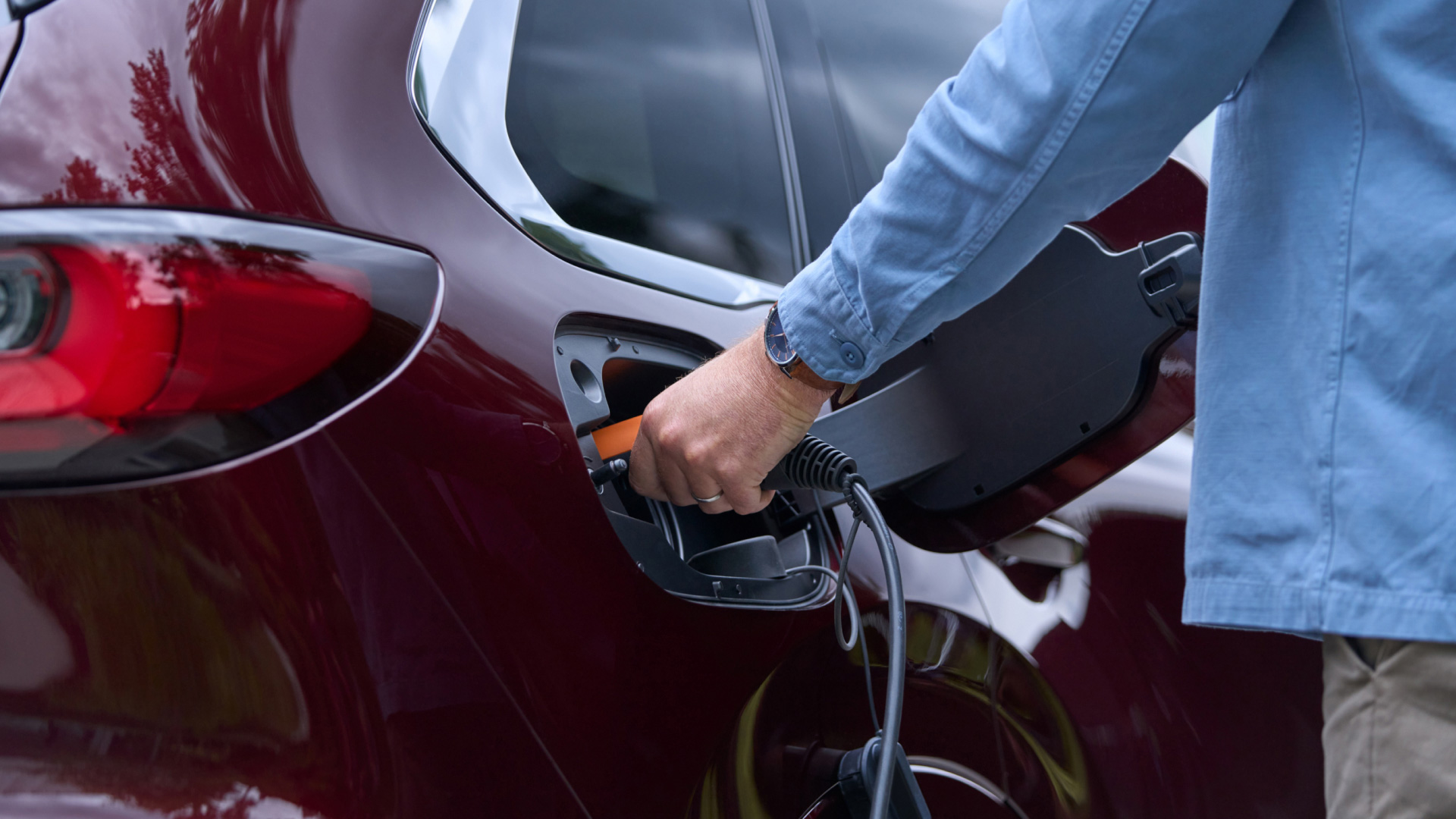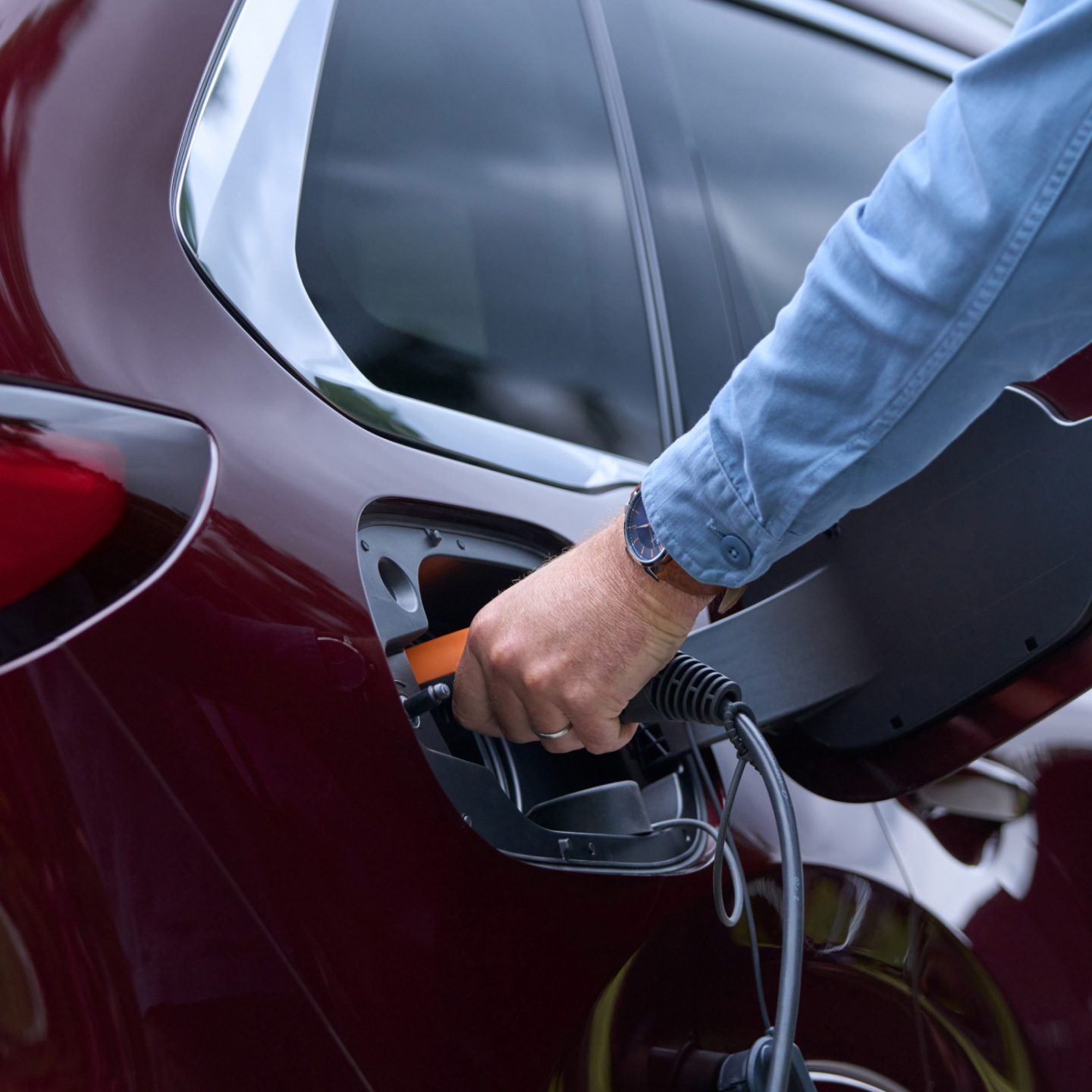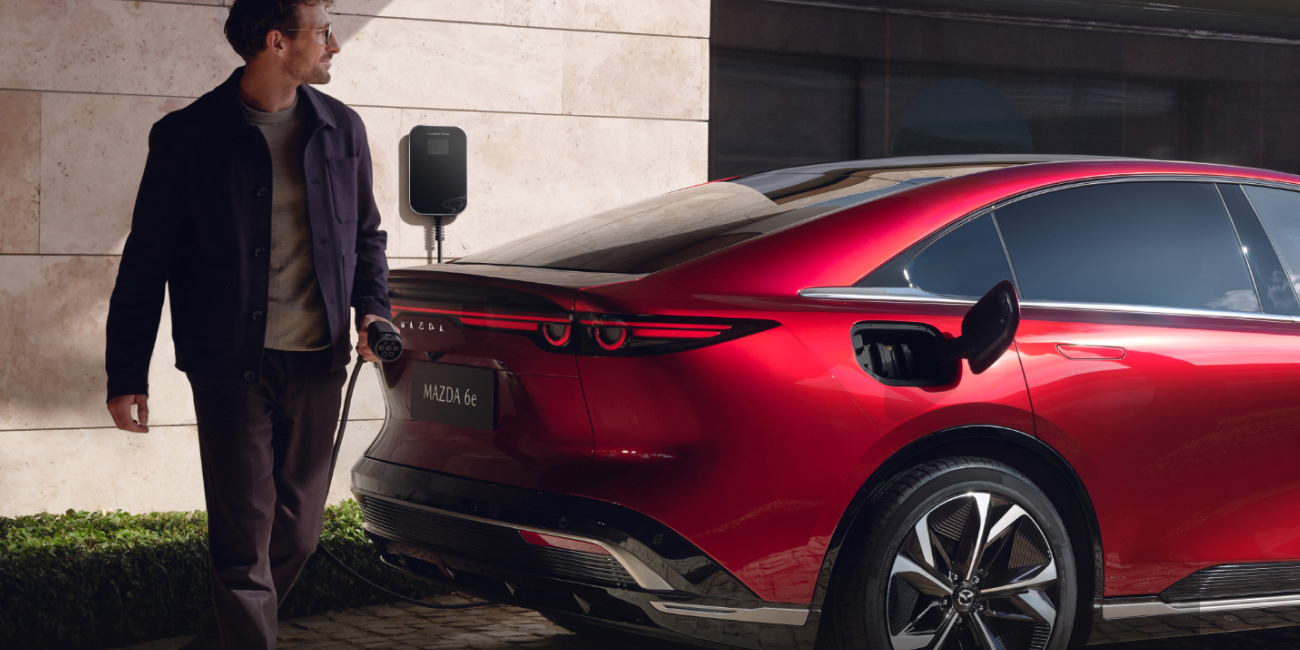
The joy of electric motion
Embrace the evolution of Zoom-Zoom with our range of electric vehicles built for everyday Australians.
We offer a multi-solution approach to suit every lifestyle, whether you’re looking to buy an all-electric or hybrid car. From our Mild-Hybrid Electric Vehicles (MHEV) to Plug-in Hybrid Electric Vehicles (PHEV) or our Battery Electric Vehicles (BEV), you’ll experience the joy of motion in every vehicle we offer.
An electric option to suit your needs
Whether you’re after improved fuel efficiency, saving money, want to reduce your emissions, or a blend of all three, the Mazda Electric Range has the perfect option for you.
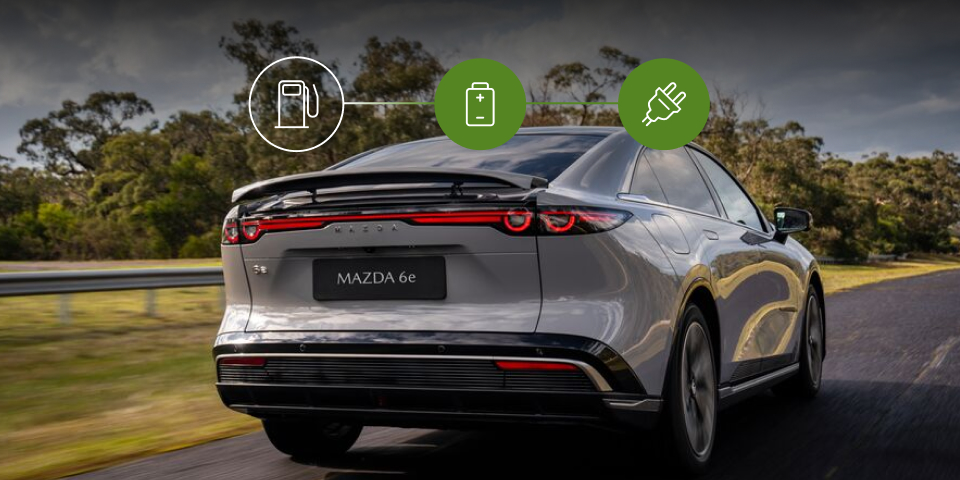
Battery Electric Vehicle (BEV)
Fully electric for a smooth and effortless drive.
- Low noise with no combustion engine
- Largest EV battery with plug-in charging only - Electric driving only for zero tailpipe emissions
- Range over 500km
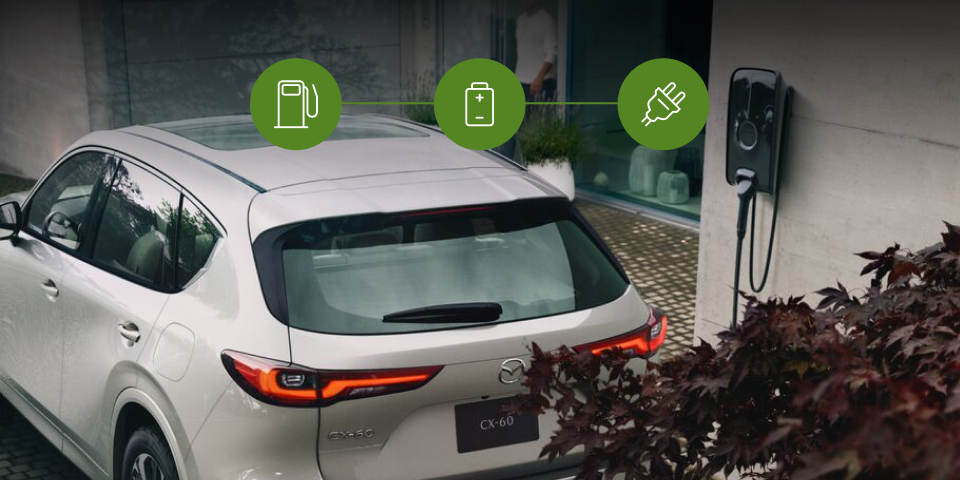
Plug-in Hybrid Electric Vehicle (PHEV)
Both an electric motor and petrol engine for extended range and fuel efficiency.
- Exceptional efficiency for long distances
- Larger battery than MHEV with plug-in charging and petrol engine
- Electric only mode with range suitable for the average Australian commute(1)
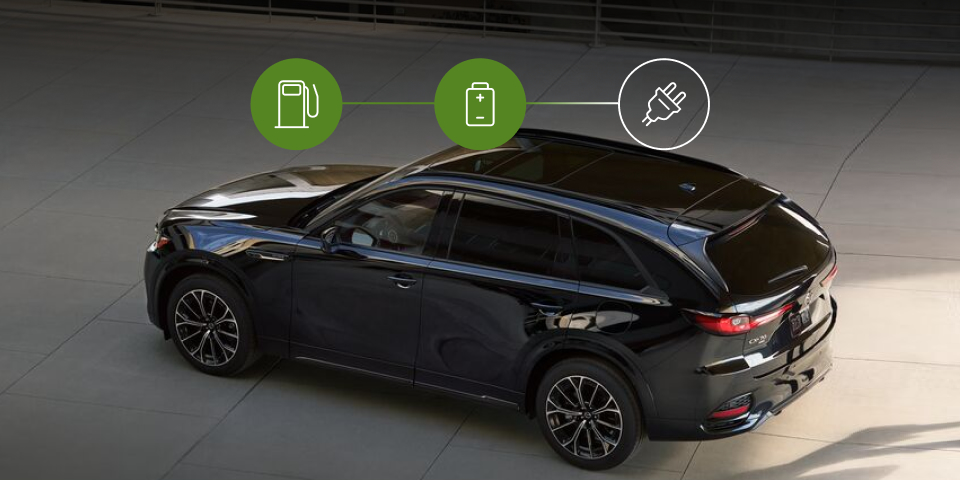
Mild-Hybrid Electric Vehicle (MHEV)
Regenerative energy capture and engine support to reduce emissions, no plug-in needed.
- Improved fuel economy for everyday driving
- Small self-charging battery to power electrical systems and optimise petrol engine.
- No electric only driving

Battery Electric Vehicle (BEV)
Fully electric for a smooth and effortless drive.
- Low noise with no combustion engine
- Largest EV battery with plug-in charging only - Electric driving only for zero tailpipe emissions
- Range over 500km

Plug-in Hybrid Electric Vehicle (PHEV)
Both an electric motor and petrol engine for extended range and fuel efficiency.
- Exceptional efficiency for long distances
- Larger battery than MHEV with plug-in charging and petrol engine
- Electric only mode with range suitable for the average Australian commute(1)

Mild-Hybrid Electric Vehicle (MHEV)
Regenerative energy capture and engine support to reduce emissions, no plug-in needed.
- Improved fuel economy for everyday driving
- Small self-charging battery to power electrical systems and optimise petrol engine.
- No electric only driving
Why choose Mazda?
Whether you're zipping around the city or out on the open road, Mazda’s Electric Range delivers smooth performance, impressive efficiency, and the latest tech – all built with Mazda’s signature style and quality.
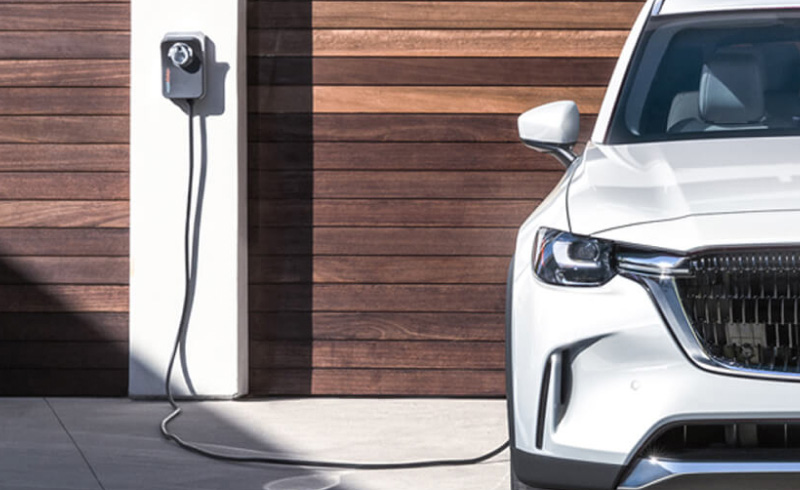
Electric experience
Built on decades of experience in electrification technology and Mazda’s customer first philosophy providing leading innovation and choice for Australians.
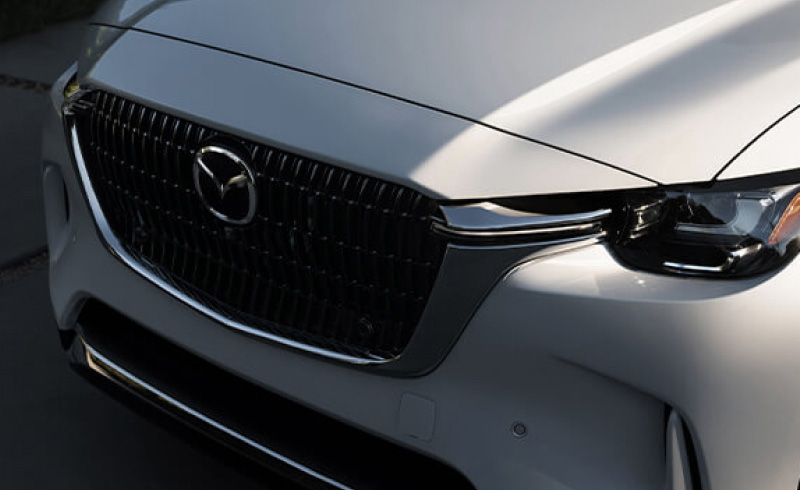
Kodo design
Every Mazda embodies the dynamic beauty of motion, seen in all living creatures, giving each one a soul of its own.

Known and trusted
We’re a leading Australian brand, trusted by millions for decades. Known for creating vehicles that inspire and endure with our joy of motion philosophy crafted into every detail.

Dealership network
It’s easy to find a dealer to help you transition to electric with one of the largest dealerships networks across rural, regional and metropolitan Australia.
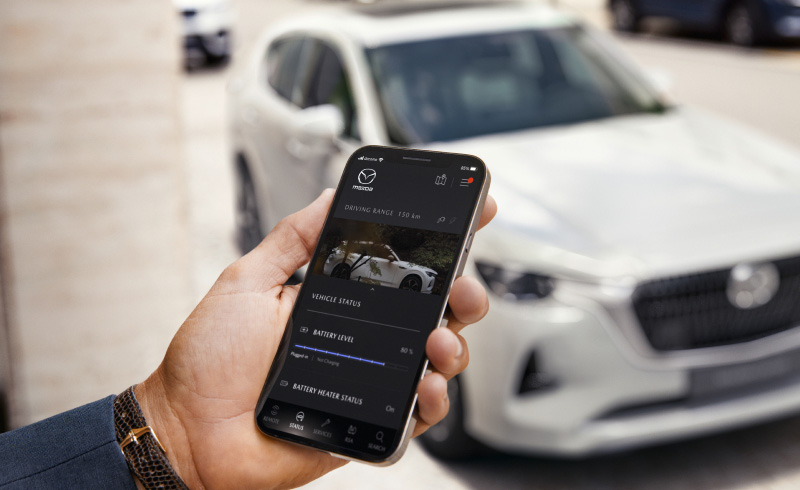
Customer experience
With a dedicated team that has more than 93%(2) of new Mazda customers saying that they would be highly likely to recommend their Mazda Dealership to family and friends, you can drive away with confidence in our customer service.

Electric experience
Built on decades of experience in electrification technology and Mazda’s customer first philosophy providing leading innovation and choice for Australians.

Kodo design
Every Mazda embodies the dynamic beauty of motion, seen in all living creatures, giving each one a soul of its own.

Known and trusted
We’re a leading Australian brand, trusted by millions for decades. Known for creating vehicles that inspire and endure with our joy of motion philosophy crafted into every detail.

Dealership network
It’s easy to find a dealer to help you transition to electric with one of the largest dealerships networks across rural, regional and metropolitan Australia.

Customer experience
With a dedicated team that has more than 93%(2) of new Mazda customers saying that they would be highly likely to recommend their Mazda Dealership to family and friends, you can drive away with confidence in our customer service.
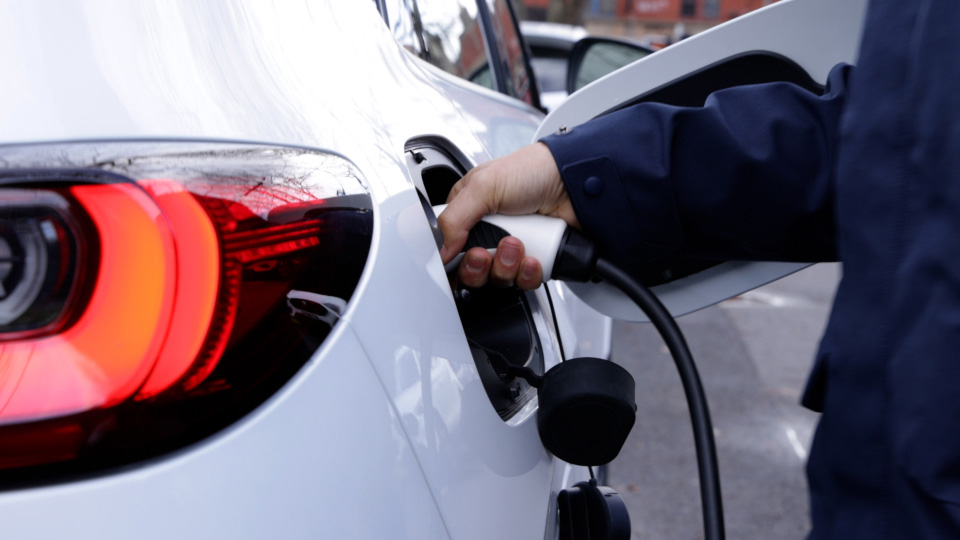
Flexible Charging To Suit Your Life
Charging your Mazda plug-in hybrid or battery electric vehicle has never been easier, with options ranging from a portable charging cable to power up using a standard powerpoint, dedicated wall charger for faster AC charging at your home or office, or from a growing network of public AC & DC fast-charging stations, you’ll always be charged and ready to hit the road.
Servicing
When it comes to keeping your Mazda Electric vehicle in tip-top shape, only a Mazda Genuine Service can deliver the assurance and peace of mind you’re looking for.
Servicing
When it comes to keeping your Mazda Electric vehicle in tip-top shape, only a Mazda Genuine Service can deliver the assurance and peace of mind you’re looking for.


Glossary of EV Terms
A kilowatt measures power, or how quickly energy is used or delivered. A higher kW rating on a charger means faster charging for your EV.
A kilowatt-hour measures energy. It’s the unit used to describe how much electricity an EV battery can store. A larger killowatt-hour battery usually equates to more range in an EV.
AC (Alternating Current): Standard electricity from the grid and home wall sockets that goes through an EVs onboard inverter to store in the battery. AC charging comes in two levels: Level 1 (slow charging from a regular wall outlet) and Level 2 (faster charging with a dedicated home or public charger).
DC (Direct Current): Power bypassed the onboard inverter to delivery power directly to the battery. DC chargers provide much faster charging, with some stations offering power outputs from 25 kW up to 350 kW. This can add significant range in as little as 10 to 30 minutes.
Type 2 – AC charging standard in Australia. Mostly seen in EV Portable Charging cables and dedicated AC connectors.
CCS2 (Combined Charging System) – DC charging standard in Australia.
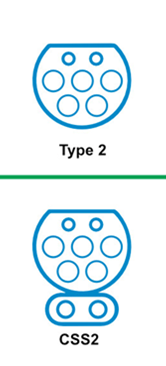
WLTP (Worldwide Harmonised Light Vehicles Test Procedure) replaced the older NEDC (New European Driving Cycle) test in 2018 and provides more realistic and standardised results by including four different phases of driving: low, medium, high, and extra high speeds. WLTP measures a vehicle's fuel consumption, CO2 emissions, and electric range.
A system where the electric motor acts as a generator during braking, converting kinetic energy back into electricity and storing it in the battery.
EV powers an appliance through an AC outlet
1. Source: https://www.abs.gov.au/AUSSTATS/abs@.nsf/Lookup/2071.0.55.001Main+Features102016
2. Source: Mazda CSI survey August 2025 YTD
